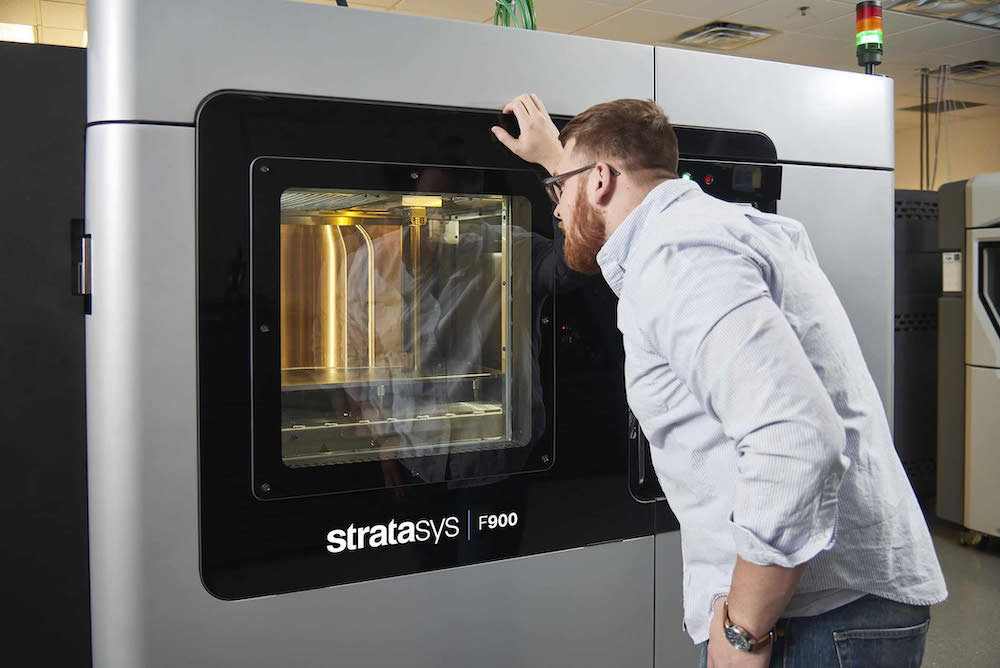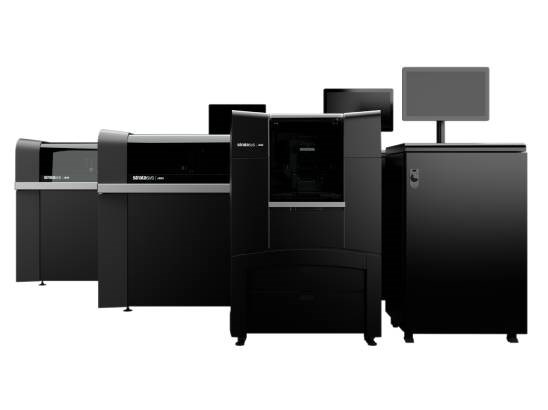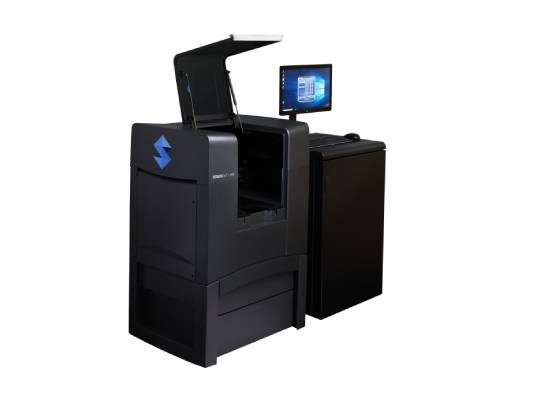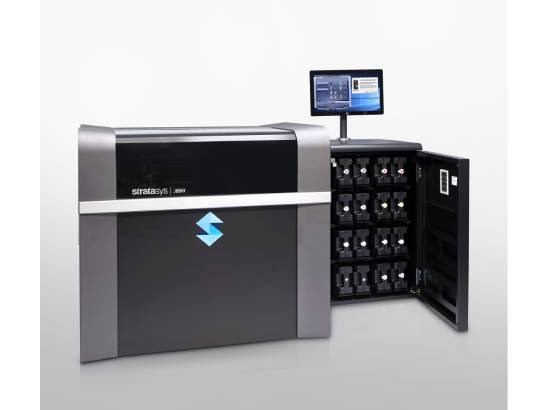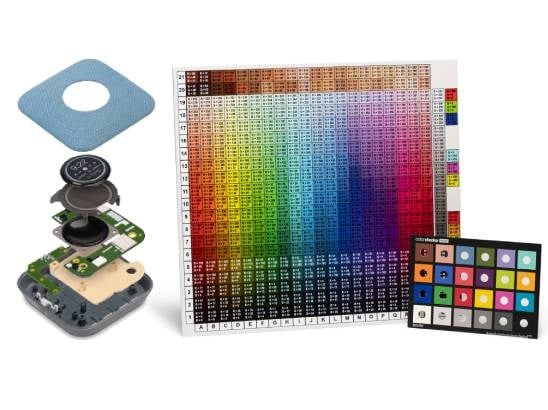Stratasys
J8 Series 3D Printers
From ideation to creation, the J8 series helps you deliver better results in less time. Get products to market faster, saving money and ensuring customer satisfaction. Increase expertise, make your business resilient and serve as many needs as possible with one powerful technology.
Imagine what your designers could do with a system that offers more material and software capabilities than any other 3D printer.
How it works:
Technology
Powered by Single Pass Jetting™, the Production System™ features bi-directional 3D printing—so whenever there is movement, there is printing.
Print
With bi-directional single pass jetting, all steps of the print process—powder deposition, spreading, compacting, ballistic suppression, and binder jetting—are applied with each pass over the build area. Layer by layer, metal powder and binder is deposited until the entire build volume is packed with bound parts and surrounding loose powder.
With bi-directional single pass jetting, all steps of the print process—powder deposition, spreading, compacting, ballistic suppression, and binder jetting—are applied with each pass over the build area. Layer by layer, metal powder and binder is deposited until the entire build volume is packed with bound parts and surrounding loose powder.
Depowder
When a build is complete, the build box is removed and replaced with a fresh box for the next build. The completed build box is moved to a depowdering station where loose powder is removed and parts are prepared for sintering.
When a build is complete, the build box is removed and replaced with a fresh box for the next build. The completed build box is moved to a depowdering station where loose powder is removed and parts are prepared for sintering.
Sinter
Depowdered parts and loaded into an industrial furnace where they are heated to temperatures near melting. Remaining binder is removed causing the metal particles to fuse together and the parts to densify.
Depowdered parts and loaded into an industrial furnace where they are heated to temperatures near melting. Remaining binder is removed causing the metal particles to fuse together and the parts to densify.

